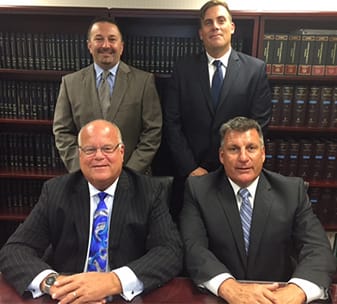Rebuilding credit after bankruptcy
Bankruptcy protection is designed as a lifeline for those struggling with unmanageable debt. It offers protection from litigation, a halt to legal recoupment proceedings (like foreclosure or repossession), keeps valued personal assets in the family and can help a struggling business stay afloat. The decision to file for bankruptcy should not be made lightly, but in the right circumstances, bankruptcy can be a valuable tool to get out from under a mountain of debt . That is why it is extremely important to speak with experienced bankruptcy counsel.
While bankruptcy’s long-term, positive effects are indisputable, the short-term effects like a lower credit score, difficulty getting new lines of credit and higher interest rates on mortgage or personal loans can be tough to deal with. Luckily, in recent years as the country’s economy has struggled, recovering from a bankruptcy has become much easier. Still, it is important to realize that a lower credit score will have effects on a filer’s finances in the years immediately following a bankruptcy filing; it is equally important to know that there are ways to counter the negative effects.
How are credit scores determined?
Before attempts can be made to offset any negative implications of a bankruptcy on a filer’s credit score, it is important to understand how the score is calculated in the first place. Credit scores, commonly known as “FICO scores,” are determined based on an analysis of a person’s:
- History of on-time payments to creditors
- Ratio of debt versus available credit remaining
- Length of time credit has been established
- Number of credit inquiries/applications
- Amount of “installment” debt to “revolving” debt
Once all that information has been compiled, each of the factors is appropriately weighted and a score is issued.
Minimizing the damage
A bankruptcy filing may make the best financial sense for a filer’s individual situation, but it will still have consequences. It is possible to minimize the damage done to a person’s credit rating by a Chapter 7 or Chapter 13 bankruptcy filing, though.
There are several steps to take after a bankruptcy that will help a filer begin the process of rebuilding his or her credit score, including:
- Keeping lines of credit open – this may sound counterintuitive, and some filers bristle at the thought of having a credit card account for fear they may be tempted to charge their way back into debt, but an open line of credit is a good thing to have on a person’s credit history. If a regular credit card is too much of a temptation, a secured card with the line of credit established by the amount of money the cardholder allots can be a good way to keep spending in check.
- Making payments on time – it cannot be stressed enough how important it is to pay monthly expenses in a timely fashion; in fact, a person’s payment history makes up a full 35 percent of their credit score
- Checking credit reports for inconsistencies and having those removed by contacting the issuer of the report, usually one of the “big three” financial giants Experian, TransUnion or Equifax
- Applying for a slightly bigger line of credit like a vehicle loan once a history of on-time payments has been established
Coming back from a bankruptcy is a long process, but it can be successful and the beginning of a fresh financial start. Each person’s financial situation is unique, so the best approach for some might not work for others, but an experienced financial planner or bankruptcy attorney can help you explore the available options and select one that best fits your needs. A bankruptcy proceeding has many positive aspects in alleviating burdensome debt. So while credit impairment may be something to think about, it should not be the deciding factor whether or not to file bankruptcy if the positives of the bankruptcy filing significantly outweigh the negatives.

